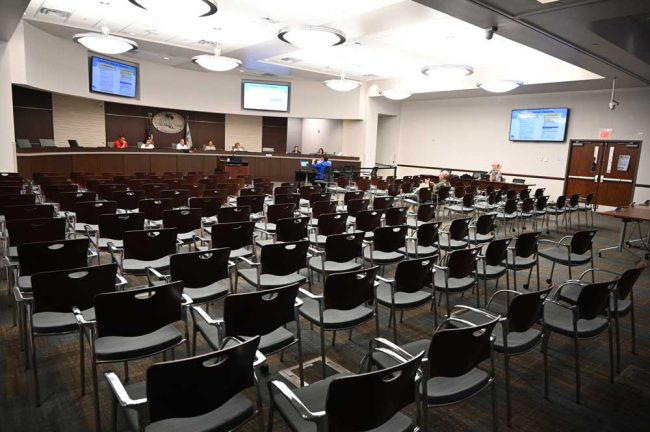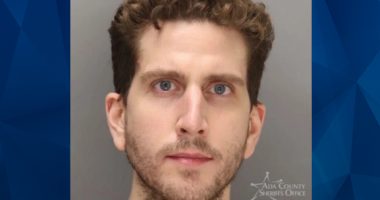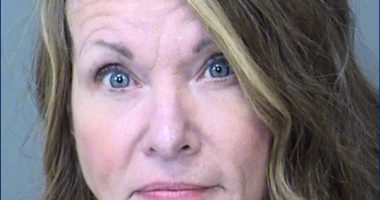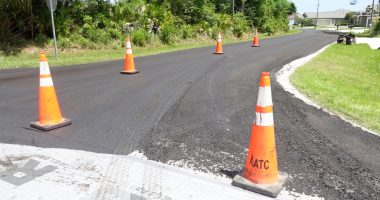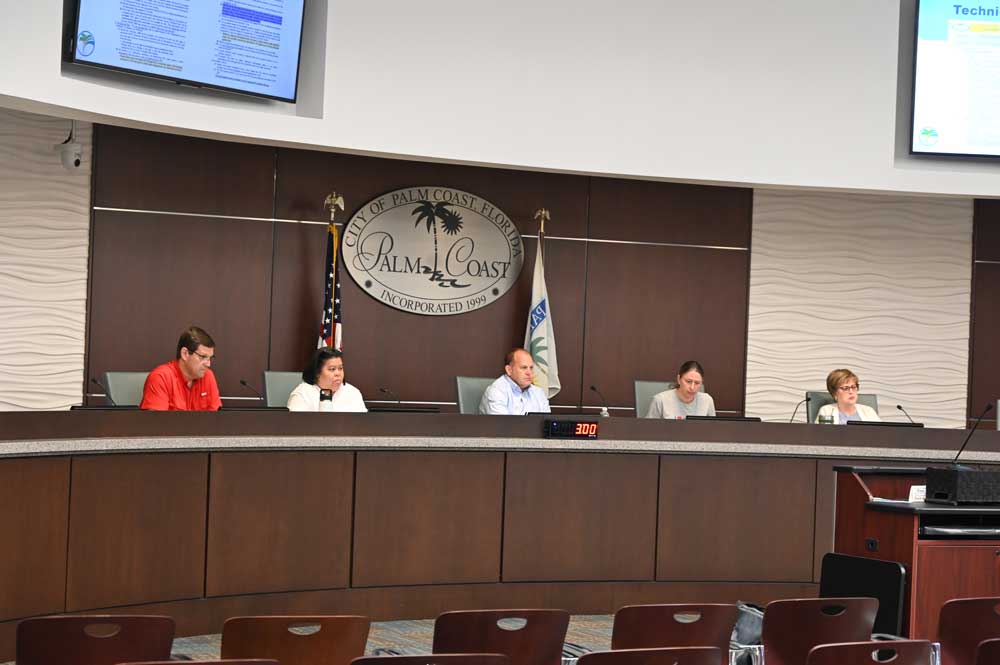
Palm Coast government’s drainage advisory committee held its first meeting Tuesday afternoon at City Hall. To say that the meeting had been eagerly awaited would be an overstatement. There were two people in the audience, neither from Palm Coast, and one of them left not long after the two-hour meeting began. None of the members of what has been a noisy and heckling “Flooded in Flagler” social media group were in the audience.
To say that the committee will find a way to address drainage problems more clearly, better, or beyond what the city administration has already done would be premature: even some of its members are “perplexed”–in the word of the committee chair, Donna Stancel–as to the committee’s direction, since for now the committee intends to do exactly what the city’s stormwater professionals have already done: visit homes affected by drainage, read reports the city had filed, speak with the homeowners city staff has spoken with, and research grant opportunities to help homeowners pay for drainage problems, though the city has already done that research and found opportunities lacking.
So while the committee’s assignment from the City Council is clear enough, its purpose or necessity is far less so, especially since the city has addressed issues for many of the homeowners who complained while many others addressed them on their own, and still others dropped off the city’s radar for being unresponsive.
A dryer spell has also put a stop to the number of “tickets,” or cases, the city was following. That could change, of course, especially with a hurricane season predicted to be busier than usual. But construction has slowed, too, and what new construction is developing is following the city’;s more rigorous standards designed to address the very issues that caused flooding complaints.
The number of cases the city investigated stood at 194 this week, with none called in for weeks, said Lynn Stevens, the deputy director of the city’s stormwater division and the person largely responsible for damming up and drying up the complaints, and for putting in a work method that anticipates construction issues before they develop.
Stevens is the committee’s liaison to the city administration. She refreshed the committee on a presentation she’d made to the council in February, with updated numbers, and projected her characteristic command of the issues, if not the problems, to such a point as to make some of the members wonder whether their role may not be superfluous. When Tony Amaral, the long-time builder and a member of the committee, was asked in a brief interview what the committee might achieve beyond what the administration has and continues to do, he said: “That’s a very good question. I’m trying to figure that out too.”
Amaral echoed Stancel’s take as well. “I’m not sure actually, until we see what the results of their investigations are,” Stancel said. “I’m going to have to see where the committee goes myself, I was kind of perplexed, on the other hand, this might just be cover for Alfin.” The reference was to Mayor David Alfin, who, along with other members of the council, supported the creation of the time-limted committee.
Even as the council was discussing that route earlier this year, it was clear that it was doing so with the elan of a punter in an election year, with some of its members–Ed Danko, Alfin and Nick Klufas–eager to look on top of a difficult issue without having to expend much capital: in came the committee, even though by then Stevens and the rest of the administration had already done most of the heavy lifting, with significant regulatory (or technical) fixes on top of that to control new construction.
Tuesday’s meeting was mostly organizational. The city’s Virginia Smith swore in the five-member committee, whose other members are Richard Cooper, Traci Domke and Maria Jesena-Wuerth. Marcus Duffy, the relatively new city attorney, briefed the committee on the state’s public record and public meetings law. They got a brief tutorial on meeting rules and procedures. They quickly and unanimously chose Snacel as chair and Cooper as vice chair, then heard Stevens’s presentation.
Their task is to focus on so-called infill lots where drainage issues have developed. Infill lots are essentially the 48,000 quarter-acre lots ITT platted when Palm Coast was a subdivision in the late 1960s, 39,141 of which now have houses on them. That leaves 9,000 vacant. It’s when those vacant lots get built up that drainage issues follow for some properties. Based on the city’s investigations, the issues are not caused by the new homes, some of which have been built significantly higher than older ones next door.
Rather, the new construction brought to light existing problems on the older homes, such as poor drainage, vegetation that interferes with drainage, and the like. If water could previously flow off the older lot onto the vacant lot nearby, the new construction now makes that impossible. So water pools on the older lot, and the older lot owner thinks it’s all the new house’s fault.
The city acknowledged that technical construction rules allowed new houses to rise like little mountains next to older houses that were built when there were no stormwater standards in the city, creating sharp disparities. Those technical rules have been re-written to diminish the disparities.
Stevens outlined the city’s approach for the committee, which in turn asked to review all the investigations to date. Committee members are interested in visiting homes affected by drainage issues (with homeowners’ permission). But Stancel said she would also like to see members of the public show up at the committee’s meetings and share their experiences with committee members directly. Tuesday’s audience was not encouraging, though Amaral attributed that to the fact that it was merely organizational.
Richard Hamilton, who lives across the Intracoastal Waterway but is a frequent participant at council and County Commission meetings–he often addresses environmental, cultural and land use matters–told the committee he was there to learn what it might uncover, which could be applied on the other side of the Intracoastal, since similar construction issues have arisen there.
The committee is planning to meet twice a month for now, with its next meeting scheduled on June 20–an “ambitious” schedule, Amaral said, that may soon settle to once a month once the committee gets a handle on its tasks.
The city is still soliciting interested individuals to serve on the committee–two additional members, and two alternates.
![]()
